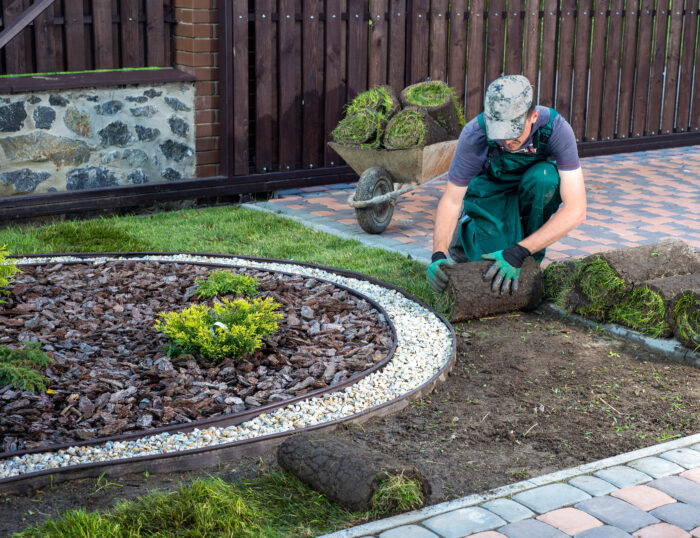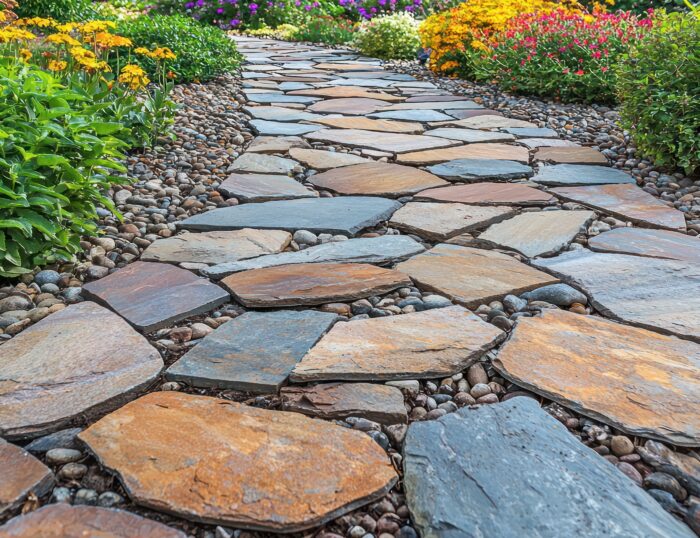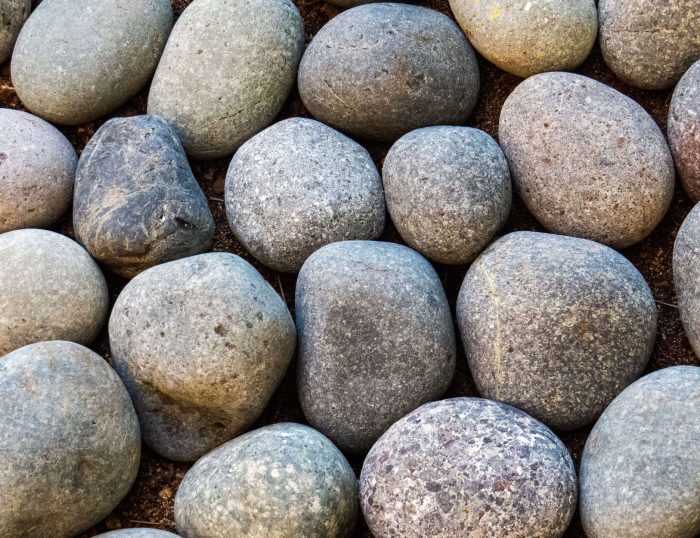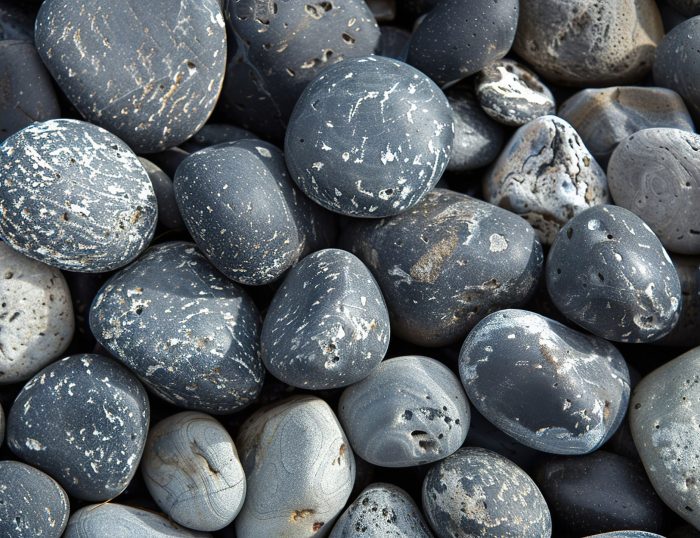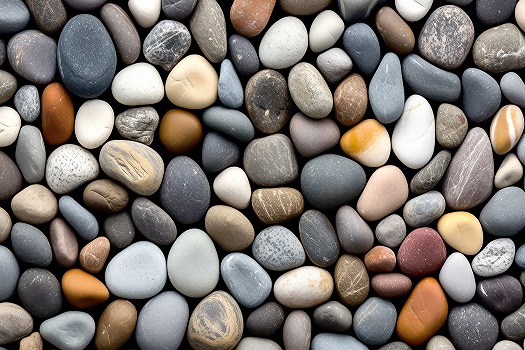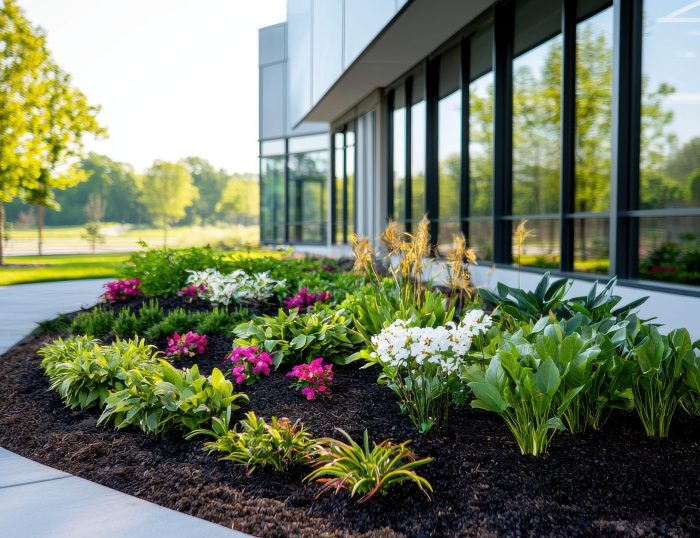
Why Black Landscape Rocks Fade
Black landscape rocks are usually made of natural stones, such as basalt, granite, lava rock, or river rocks, that have a dark color due to their mineral composition. However, these minerals can also react with the elements in the environment and cause the decorative rocks to lose their color. Some of the common causes of fading are:
- Weathering – Weathering is the process of physical and chemical changes that occur on the surface of decorative rocks due to exposure to water, wind, temperature, or biological agents. Weathering can cause the decorative rocks to crack, crumble, or erode, and they can also alter the decorative rocks’ chemical structure and color.
- Sunlight – Sunlight contains ultraviolet (UV) rays that can break down the pigments and minerals in the decorative rocks and cause them to bleach or fade.
- Water – Water can also cause black landscape rocks to fade, especially if it contains dissolved minerals or chemicals that can react with the decorative rocks. For example, hard water or acidic water can leach out the iron or manganese from the decorative rocks and make them lighter or reddish.
- Chemicals – Chemicals can also cause black landscape rocks to fade, especially if they’re applied to the decorative rocks or the surrounding soil. For example, fertilizers, pesticides, herbicides, or salt can alter the pH or salinity of the soil and affect the color of the decorative rocks.
How to Tell if Black Landscape Rocks Have Faded
The easiest way to tell if black landscape rocks have faded is to compare them with their original color or with other decorative rocks that haven’t been exposed to the same conditions. You can also use a colorimeter or a spectrophotometer to measure the color difference between the faded and unfaded decorative rocks. However, these devices may be expensive or impractical for most homeowners.
Another way to tell if black landscape rocks have faded is to look for signs of weathering or erosion on the surface of the decorative rocks. For example, you may notice cracks, chips, holes, or stains on the decorative rocks that indicate they’ve been worn down by water, wind, or chemicals. You may also notice a powdery or chalky residue on the decorative rocks that indicates they’ve been bleached by sunlight.
How to Prevent Fading
If you want to prevent fading on your black landscape rocks, you need to protect them from the factors that cause them to fade. Here are some ways to do that:
- Sealer or stain – You can apply a sealer or a stain to your black landscape rocks to create a protective layer that resists weathering, sunlight, water, and chemicals. A sealer is a clear coating that preserves the natural color of the decorative rocks, while a stain is a colored coating that enhances or changes the color of the decorative rocks. You can choose from various types of sealers or stains depending on your preference and budget.
- Strategic placement – Consider the placement of black landscape rocks, such as polished black river rock, in your outdoor space. Providing some degree of shade through trees, pergolas, or other structures can reduce direct sun exposure and slow down the fading process.
- Proper drainage – Ensuring adequate drainage in your landscaping design can prevent water from pooling around the decorative rocks, minimizing the effects of constant wetting and drying. Proper drainage can also mitigate the impact of mineral leaching.
- Cover or shade – You can also cover or shade your black landscape rocks to reduce their exposure to sunlight and water. Use a tarp, a cloth, a mulch, or a plant cover to shield your decorative rocks from UV rays and rain. However, you should also make sure your cover doesn’t trap moisture or heat under it, as this could also damage your decorative rocks.
- Regular maintenance – To keep black landscape rocks looking their best, regular maintenance is key. This includes cleaning debris and dirt off the decorative rocks’ surface, which not only enhances their appearance but also allows them to better resist fading. Gently washing the decorative rocks with water and a mild detergent can maintain their sheen. Avoid using any harsh chemicals or abrasives that may scratch or discolor your decorative rocks.
Choosing the Right Type of Decorative Rocks
When selecting black landscape rocks, it’s essential to consider the type of decorative rock itself. Some decorative rocks are naturally more resistant to fading due to their mineral composition. For instance, basalt is a volcanic rock often used in landscaping and known for its durability and ability to retain its color.
While black landscape rocks can be susceptible to fading over time due to UV exposure, weather conditions, and chemical reactions, this doesn’t mean they’re doomed to lose their beauty. With thoughtful selection, strategic placement, proper maintenance, and the use of protective measures like sealants, black landscape rocks can remain a stunning and enduring feature of your outdoor space. Remember that nature requires care, and by investing a little effort, you can enjoy the timeless allure of these dark-hued gems for years to come.
No matter what type of landscaping project you’re planning, decorative rocks, stones, or beach pebbles can add immense depth, character, and beauty to it. When you’re ready to get started on your landscaping plan, reach out to the experts at RS&P Rock Stones & Pebbles, a premier provider of river rock, Mexican beach pebbles, and a wide variety of decorative stones. To learn how we can help you create the landscape of your dreams, call us today at (866) 380-0770.

